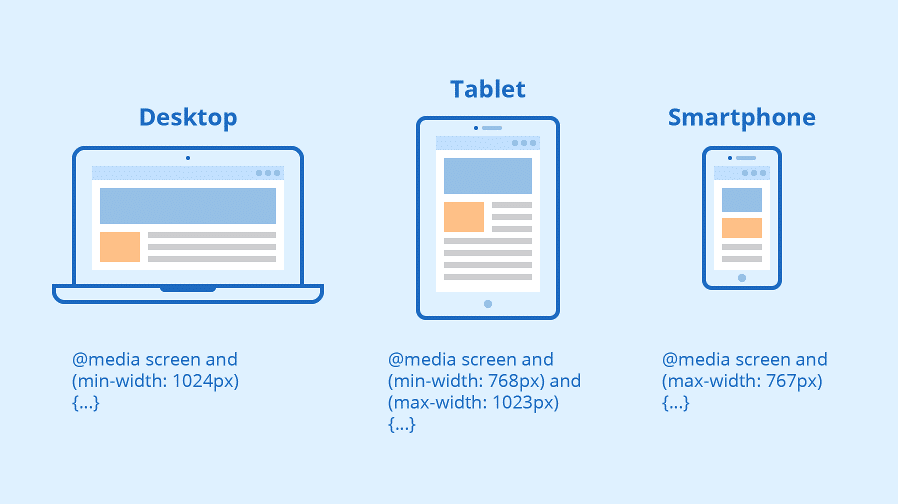ALT TEXT
Alt text or alternative text is used within HTML code to describe the appearance of an image on a web page. Alt text serves several purposes:
- It allows screen readers to read aloud information about images to users who are blind or visually impaired.
- It is displayed in place of an image if the image file cannot be loaded.
- It allows search engines to better crawl and rank your website.
API
An Application Programming Interface (API) allows two applications to communicate with one another to access data.
BACKEND
The backend of a website is the part that website visitors don’t see. The backend generally consists of a server, an application, and a database.
BACKLINK
A backlink is a link from one website to another. Backlinks are important to SEO and can help increase website traffic.
BANDWIDTH
Bandwidth is the amount of information your website can send to users in a specific amount of time. The higher the bandwidth, the better the speed and connectivity.
BOUNCE RATE
Bounce rate is defined as the percentage of visitors who leave a site from the same page they landed on, without visiting any other pages. That is, they “bounce” away from the site almost instantly.
BREAKPOINT
Breakpoints are the points at which a web page is adjusted based on the size of the device, such as larger screens or mobile devices. Breakpoints are an important aspect of responsive design.
CACHE
Cache is a temporary storage location where website data is stored so that the next time a user visits a site, the page loads faster.
CLIENT-SIDE
Client-side refers to any visible feature that shows up in a web browser or requires user input. Markup languages like HTML and CSS are interpreted by the browser on the client side.
CMS
A Content Management System (CMS) is a software tool that helps users create, manage, and modify content on a website without needing to write all the code from scratch.
CSS
Cascading Style Sheets (CSS) is used to define the visual appearance and formatting of a website.
DNS
The Domain Name System (DNS) acts as the phone book of the internet. However, instead of mapping people’s names to their street address, it maps domain names (like: google.com) to IP addresses (like: 173.194.39.78).
DOM
The Document Object Model (DOM) is a programming interface for HTML and XML documents. It is the data representation of objects that comprise the structure and content of a web page.
DOMAIN
A domain name, or simply ‘domain’, is the name of a website. It is what comes after “www.” in a web address. Examples of domain names are: amazon.com, wikipedia.org, and zoom.us. (Note: A domain name and URL are not the same thing).
EM
Em is a unit of measurement for sizing fonts and other elements within a web page. Em is a relative measurement, similar to a percent, that is equal to the currently specified point size. For example, if the point size is set to 16 points, one em is equal to 16 points.
FAVICON
A favicon is a small icon used on web browsers to represent a website or web page. Favicons are most often seen next to a web page’s title in browser tabs, but they can also be found in bookmark lists, browser history, and other places on the web. Favicons add legitimacy to your website and help boost brand recognition.
FRONTEND
From fonts and colors to dropdown menus and sliders, the frontend of a website is the part that users see and interact with. The most common frontend languages are HTML, CSS, and JavaScript.
HTML
Hypertext Markup Language (HTML) is the standard markup language for describing the structure of web pages.
HTTP/HTTPs
Hypertext Transfer Protocol (HTTP) is a set of standards that allow users to exchange information over the web. Communication between client computers and web servers is done by sending HTTP Requests and receiving HTTP Responses. Hypertext Transfer Protocol Secure (HTTPS) is HTTP with encryption. The main difference between HTTP and HTTPS is the presence of an SSL certificate.
JAVASCRIPT
JavaScript is a scripting language that allows you to implement complex features on web pages. While HTML and CSS are languages that give structure and style to web pages, JavaScript provides interactive elements to web pages.
META TAG
Meta tags are snippets of code that provide search engines with information about a web page. They also tell browsers how to display information to website visitors. Meta tags are only visible in HTML code and do not appear on a web page itself.
PLUGIN
A plugin is a piece of software that adds a specific feature to an existing application or program.
RESPONSIVE DESIGN
Responsive web design (RWD) is an approach to web design that allows web pages to alter their layout and appearance to suit different screen widths and resolutions. It is a set of practices that changed the way we design for the web; it has become the default.
SERVER-SIDE
Server-side refers to operations that are performed by a web server such as storing and retrieving data from a database.
SSL
Secure Sockets Layer (SSL) is a security protocol that provides privacy, authentication, and integrity to internet communications.




